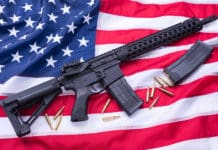
Seems I opened up a big ol’ can o’ worms yesterday, with my editorial on The Sad State of Gun Training in America. Good. I like nothing better than provoking some thoughtful debate and and discussion on TTAG. (And what’s so cool about TTAG is that’s exactly what you get – not a bunch of flaming, but well-reasoned arguments. Thanks, guys!) The afore-mentioned can o’ worms got me to thinking: just what would the ideal CHL training look like? Get your can openers ready – it’s time to go a-worm huntin’. First of all, let’s cover the obvious stuff:
- Prove that you can load and shoot your gun, with a minimum standard of shots on target
- Understand legal restrictions on conceal carry, specifically where you can – and cannot – carry
- Understand concealment – what is and what is not “concealed”
- Understand disclosure when stopped by the police
- Understand the application/approval/renewal process
- Understand why, how, and when your permit can be revoked.
Here’s a list of what I’d like to see covered:
- Experience shooting at multiple targets – not necessarily to qualify, but to have the experience of shooting, so you’ll understand you need more training
- Experience shooting at moving targets (same rationale as above)
- Experience low-light shooting (ditto)
- Talk about holsters and other methods of conceal carry
- Talk about accessories – tactical flashlights, et cetera
- Talk about home defense – shotguns, rifles, carbines
- Talk about conceal carry and automobiles – where to carry, practical limitations, side-effects (hearing), concealment, and risks of theft
- Talk about skills development/maintenance – how much is enough range time?
- Talk about alternate weapons for training – dummy weapons/rounds, AirSoft guns
- Anecdotes, horror stories, real-life experiences – what happens (good AND bad) when you use your concealed handgun
- Legal issues – what can and does happen when you conceal carry
Okay. That’s my list. What’s yours? Here’s my plan: I want to work on this, and develop a list of recommendations for the ideal conceal handgun permit course. Then we can see if the NRA or one of the other national gun-rights organizations will get behind our list and take the arguments to Congress and each state legislature, as a template for any new legislation that they consider on the issue.
So get your pens out, sharpen your tongues, and let me know what you think. I’m all ears.




One element of the class here in Texas is conflict resolution. In other words, how to avoid conflict that could lead to violence. Another aspect is observation of one's environment and avoidance of going into really stupid places where you are more likely to get in trouble. I think learning the tactical stuff is great, but since most people are not going to ever need it, apart from the sheer joy of learning, as much emphasis on when not to use a gun would be a good idea.
I'm with Ron. I would really like to see a LOT of training in conflict avoidance. I'm currently making my way through Armed Response's "Responsible Use of Lethal Force." While I wouldn't recommend the video to anyone without a large pot of coffee nearby, it's exactly the kind of information concealed carry license holders need to know. It tells ou everything you need to know about NOT shooting, but were too macho to ask.
Where can I get that video?
Thanks ‘
Jerry
Ditto on the conflict avoidance.
Not to pimp Massad Ayoob, but his book "In the Gravest Extreme" is possibly the best primer for someone who wishes to own or carry a firearm for personal defense. From a purely academic standpoint, Ayoob spends a lot of time on "when" and under what circumstances a person may introduce deadly force into a conflict. I know this book changed my approach to concealed carry when I was still new to the concept.
Once these basics are understood, it is incumbent upon the shooter to gain as much realistic training in "how" to effectively use their firearm. Like a LEO friend once told me, "you can never have too much training."
Comments are closed.